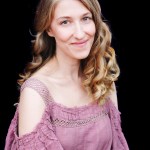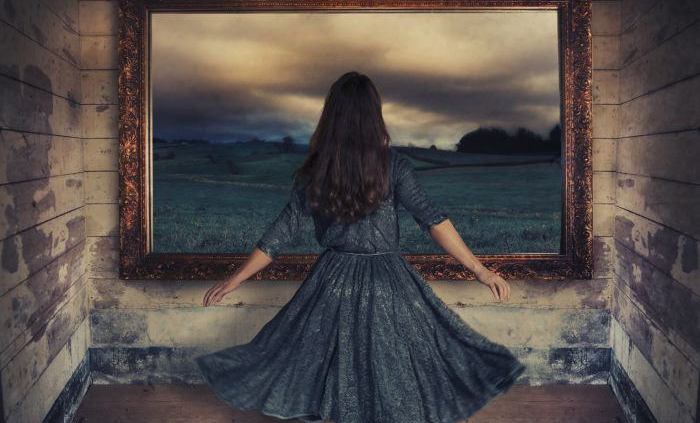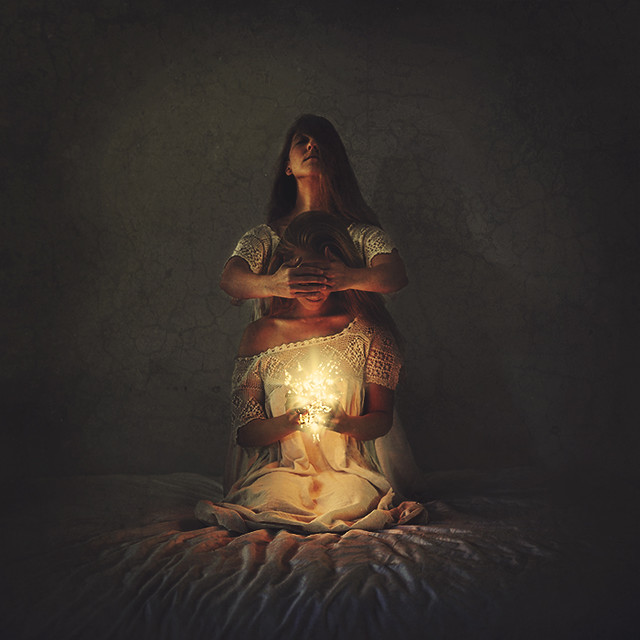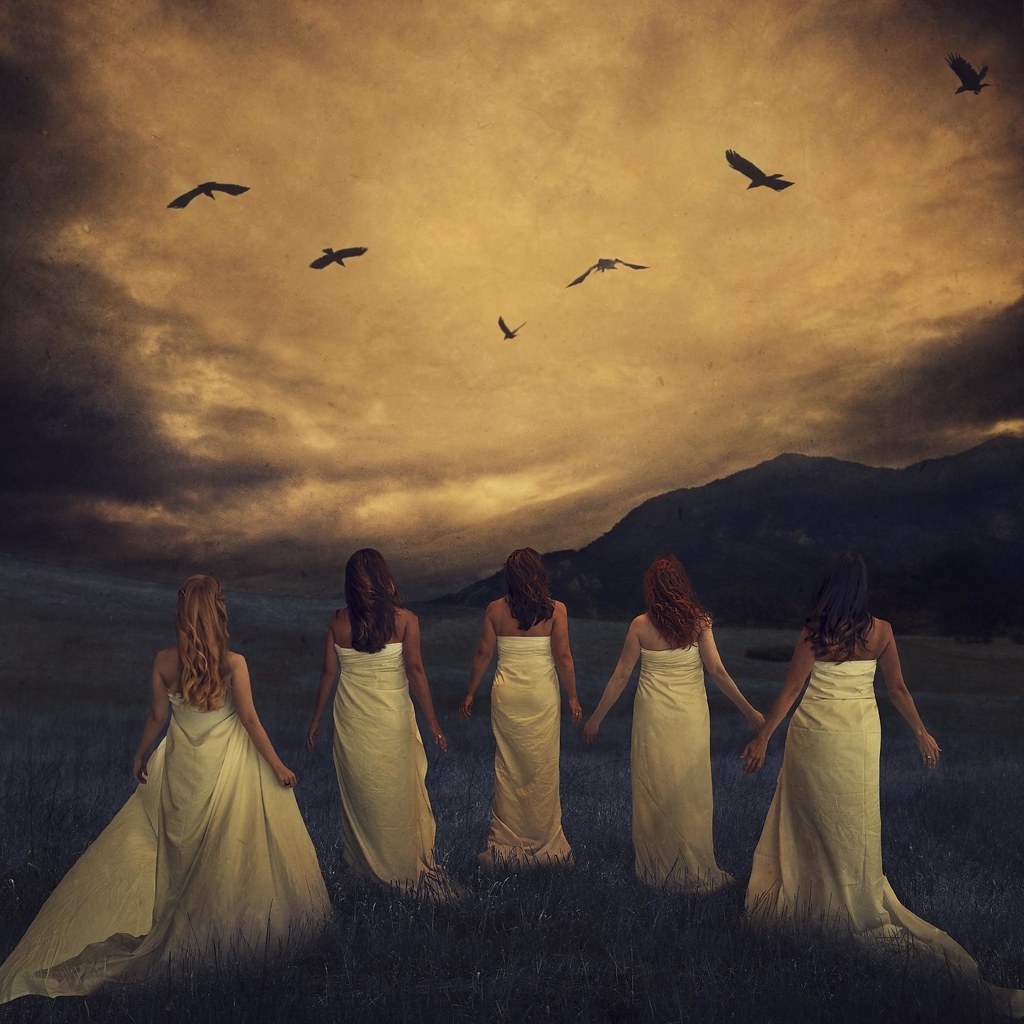
In honor of International Women’s Day, we’re featuring the work of one of our most universally beloved Flickr photographers: Brooke Shaden.
Brooke is a fine art photographer who specializes in self-portraiture, conceptual photography, and creative photo manipulation. She joined Flickr over ten years ago to share her surreal, dreamy stories with a broader community of photographers.
Her work is a mix of beautiful, whimsical worlds and dark, thought-provoking images. Learn more about Brooke’s philosophy in our Q&A with her below.
How did you get your start in photography? How did you pick fine art self-portraiture photography as opposed to other genres?
My start into photography was a very intuitive venture. I had just graduated from film school with an additional degree in English literature, and my focus was on storytelling. Photography became the next logical step, and I found it an amazing escape from the social aspects of filmmaking. Instead of asking an entire team to help bring my vision to life, I could create by myself entirely and still tell a story – this time in a single frame.
For me, photography represents freedom. Freedom from social obligation, freedom from collaboration, and freedom to express myself in exactly the way I see fit. I got into this particular style of work because my vision has always been singular. Whether I’m making a film or writing a story, there is always a focus on darkness and beauty.
What fascinates you about photography? How would you describe your work and photographic style?
Traditional photography promises to depict life as we feel and see it. To take an image that is literally true to life and manipulate that, whether through set design or Photoshop, is like taking control of reality. I love being able to capture what is in front of me and manipulate that scene to reflect the way I see the world. My work is largely informed by that desire to craft the world I wish I lived in. Visually, my style is dark and disturbing yet beautiful, surreal yet grounded in reality. All of my work is square format with an edge toward the cinematic.
How has your style changed from when you started to now?
As a photographer starting out, I wanted to get all of my ideas out fast. I shot every single day for a couple of years, and the concepts I was shooting were very in-your-face, dark, and weird. Over time I learned the difference between shock value versus really meditating on an idea and presenting that idea in the most effective way possible. The main difference between my work then and now is that I’ve slowed down the production process to create a more meaningful experience for myself and the viewer.
In the beginning, I remember being scared of color and locations. I shot almost everything in my apartment and favored neutral colors. After a hundred images like that, I branched out, and now I love shooting on location outside and utilizing bold colors in my work.
Given everything you’ve learned in your years as a photographer, what do you look for when you “see” a shot? What makes a lasting photograph?
In my case, I don’t so much “see” shots as I create them. I look for timeless, natural backdrops. When I find those spaces, such as fields or forests, I love to put my own concept into that space. For me, the more neutral and unobtrusive a location, the better palette it is for my imagery. Timeless imagery is what I believe makes an image last.
What tip/practical gear/shooting-lighting-or editing technique do you wish you knew about photography when you started, that you now use every time you shoot?
The first is the importance of a great quality image for printing purposes. Of course, for creating in general, this doesn’t matter at all. But, down the line when you want to print and thus make money as a fine art photographer, those extra pixels and a high dynamic range are important. I’m a Sony shooter now for that reason. Another practical tip I wish I knew was that I could set my timer to take multiple shots when I’m doing self-portraits. It has been so helpful during certain shoots to be able to burst capture five images instead of just one!
You recently celebrated your tenth anniversary on Flickr. What’s your favorite part of Flickr? What made you stay with us for so long?
Community. Community all the way. I am an extremely shy, introverted person so I find having “real life” friends very challenging. But online, and especially on Flickr, I was able to cultivate a group of like-minded individuals that I could be inspired by and, in turn, inspire, by simply sharing my vision. To find a group of people gathered in one place who appreciates art and are willing to have meaningful conversations about it is priceless. I’ve met some of my best friends thanks to Flickr. I stay on Flickr because of the promise of friendships, and also to keep an archive of my entire photo journey.
Do you ever find it challenging to work as a female in a male-dominated industry?
I find myself in an interesting position for two reasons. One is that I work entirely alone and remotely, so I don’t have those in-person experiences where I can see the decision-making process of why I was or was not chosen for a job. But second is that I live my life and career as though my gender is irrelevant, as it is, to me. I love to create any concept, pursue any business decision, no matter what and who is involved.
If you had to give one piece of advice to young and aspiring female photographers today, what would it be?
What you have to say is important to someone. You may not know who that person is, or how you will impact them, but rest assured your voice is one that someone needs to hear. Never forget that, and always create with that confidence.
Do you have any female photographers you admire, or who may have influenced your work?
Absolutely! Julia Fullerton-Batten is one of them – a true genius! Cristina Mittermeier, Marico Fayre, and so many more!
Finish this sentence: “I shoot because…”
I shoot because someone needs to see what I have to create.
Follow Brooke at:







